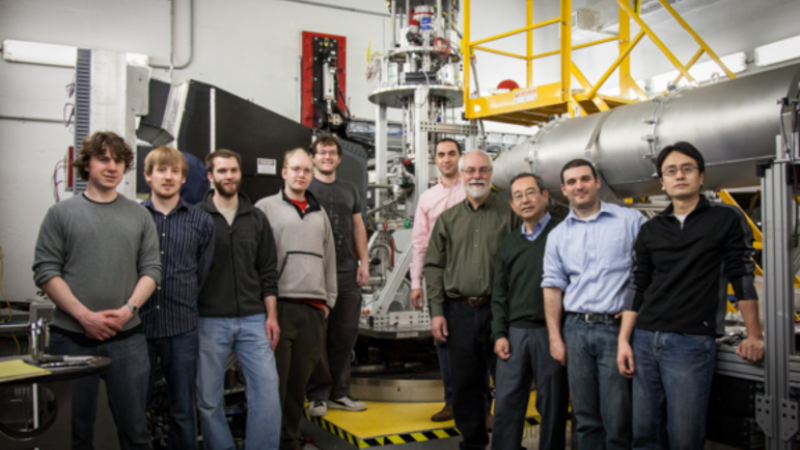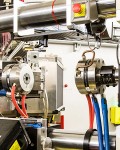Liquids and glasses can have unique optical, electronic, and structural applications but are poorly understood compared to crystalline materials, limiting the ability to take advantage of the characteristics of glasses in a range of applications. Containers can react with molten samples at high temperatures or can favor the growth of crystals over the formation of glasses. Using the chemical and isotopic sensitivity of neutron scattering to understand these disordered structures requires a new capability to hold samples in a neutron beam at high temperature without using a solid physical container. New sample environment equipment at Oak Ridge National Laboratory’s (ORNL) Spallation Neutron Source (SNS) enables scientists to study levitated molten metals with neutron beams, opening up new opportunities for understanding liquids, glasses, and industrially important alloys.
Kenneth F. Kelton of Washington University, Takeshi Egami of the University of Tennessee, Alan I. Goldman from Iowa State University, and Xun-Li Wang from the City University of Hong Kong (formerly of ORNL) designed and constructed the first electrostatic levitation sample environment designed for use in neutron scattering experiments. A test facility was constructed at Washington University to verify the design. Samples as large as 600 mg (approximately 4.5 mm in diameter) were levitated and maintained in position at better than 50 mm.
The neutron electrostatic levitator (NESL) was recently commissioned on the VULCAN engineering materials diffractometer at SNS. Using electrostatic fields as a “container” and a laser for heating without mechanical contact, the structure of a metallic sample was measured with neutron diffraction in both solid and liquid states. VULCAN was selected for the initial commissioning of the device, which is designed to be used on several beam lines at SNS. When fully commissioned, NESL will be available for elastic and inelastic studies of high-temperature metals, both above and below their melting temperatures.
The levitator allows structural and dynamical studies of high-temperature liquids and glasses to be made in a containerless, high-vacuum environment. Taking advantage of the high neutron intensity at SNS, NESL enables pioneering studies of evolving short- and medium-range order in liquids above and below their melting temperatures and allows researchers to obtain information about the atomic dynamics in normal and supercooled liquids (i.e., liquids taken below their melting points). In combination with synchrotron x-ray data, results obtained from NESL will provide key information for both basic and applied research. Researchers expect to use this capability to understand key performance features of high-strength bulk metallic glasses and refractory materials for high-temperature applications, among other applications.
SNS is operated and managed by the ORNL Neutron Sciences Directorate. Funding is provided by the Scientific User Facilities Division, Office of Basic Energy Sciences, US Department of Energy.







